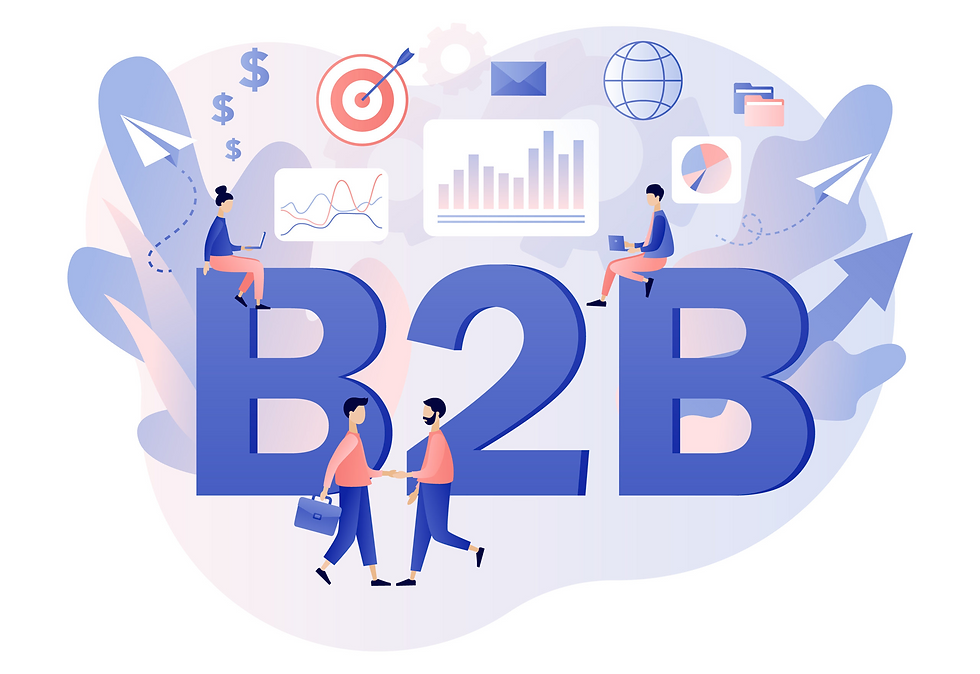B2B Marketing That’s Winning Now — and What’s Next in 2026
- Heidi Schwende

- Aug 15
- 3 min read

We’re deep into 2025, and the marketing teams hitting their numbers are the ones who’ve stopped clinging to the old MQL factory model and started operating like true growth partners. Buyers are more guarded, inboxes are flooded with AI noise, and the cookie crumble is real.
Here’s what’s working right now, plus the early shifts you should be building toward before 2026.
What’s Working Right Now (Late 2025)
1. Buying Groups > Single Leads
Right now, the fastest-growing pipelines are coming from multi-contact, role-specific engagement inside target accounts.
Mapping out every influencer and decision-maker in the deal.
Coordinated touches from marketing and sales—no channel silos.
Messaging tailored to each role’s needs, not generic “one-size-fits-all” sequences.
2. Brand Momentum + Demand Precision
Winning teams aren’t choosing between brand and demand—they’re running both in sync.
Consistent narrative across site, social, sales decks, and ads.
Content drops (research, reports, opinion pieces) that the industry actually talks about.
Always-on campaigns layered with targeted activation for in-market buyers.
3. AI as an Operations Accelerator
The winners are using AI to make space for strategy, not replace it.
Marketing Ops automating campaign setup, segmentation, and reporting.
AI-assisted sales research—accounts, contacts, and intent cues.
Human-reviewed AI personalization for outreach at scale.
4. First-Party Data Power Plays
As cookie targeting fades, the tightest targeting now comes from your own data.
Capturing intent via owned channels—events, webinars, communities.
Privacy-safe data partnerships for account enrichment.
Using CRM + intent signals to trigger personalized campaigns.
5. Content That’s Hard to Fake
In an AI-flooded internet, what works is either deeply original or hard to replicate.
Research-based content with proprietary data.
Experience-driven case studies and customer stories.
Short, impactful video and interactive tools for rapid trust-building.
6. Precision Outreach Over Volume
Mass blasts are dead—buyers are literally filtering them out with AI.
Hyper-relevant outreach tied to real-time account activity.
Layering email, LinkedIn, and targeted ads for repeated brand presence.
Smaller, high-intent lists instead of bloated, disengaged databases.
Early 2026 Signals You Should Be Planning For
1. AI Agents Go From Novelty to Normal
We’re already seeing early adoption in Marketing Ops and Sales Ops—by mid-2026, AI “teammates” will be standard.
Expect agents to run always-on campaigns, monitor engagement, and flag hot accounts without human intervention.
The gap between teams with clean, enriched data and those without will widen fast.
2. Brand-as-Community Will Be the Differentiator
In 2026, the brands breaking through won’t just talk to their market—they’ll host it.
Private communities for customers, partners, and prospects.
User-led events, forums, and resource hubs.
Subscriptions replacing gated PDFs for high-value content access.
3. Buying Group Measurement Will Become the Default
The platforms (6sense, Demandbase, etc.) are already shifting toward this—by next year, individual lead attribution will feel archaic.
KPIs will focus on buying group engagement, not isolated form fills.
Campaigns will be designed for multi-role influence from the start.
4. Value-Based Pricing Models for Martech
SaaS vendors are already experimenting—expect more martech to price by outcome or value delivered rather than seats.
This could lower costs for lean teams and increase ROI pressure on vendors.
5. The End of “One Message Fits All” Campaigns
By 2026, the ability to micro-tailor campaigns for multiple segments—using AI to adapt content dynamically—will move from “nice to have” to table stakes.
Real-time creative swapping based on role, industry, and buying stage.
Automated testing loops that update campaigns without manual intervention.
The Bottom Line
Right now, the strongest B2B results are coming from:
Buying group targeting over individual lead chasing.
Brand + demand alignment to stay visible and relevant.
AI in ops, not replacing strategy.
First-party data ownership and smart partnerships.
Content that’s original, contextual, and human-led.
And the smart teams? They’re already laying the groundwork for 2026, where AI agents, brand communities, and buying group measurement will be baked into the way we all work.
Your 2025 vs 2026 Battlecard






Comments